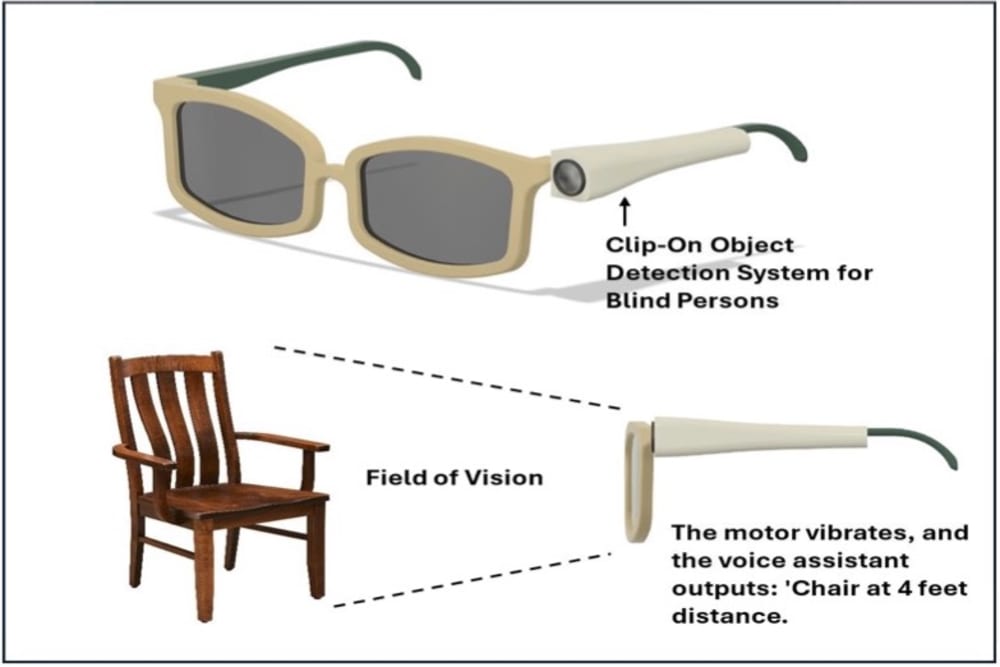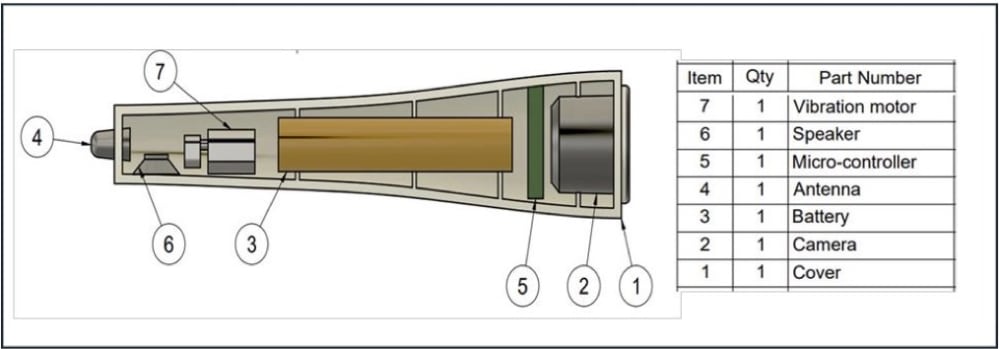Eyesight is one of the essential human senses, and it plays a significant role in human perception about the surrounding environment. The issue of visual impairment or blindness is faced worldwide. According to statistics of the World Health Organization (WHO), globally, at least 2.2 billion people have a vision impairment or blindness, of whom at least 1 billion are blind. Vision impairment or blindness is one of the top ten disabilities in humans, and unfortunately, India is home to the world’s largest visually impaired population. Blind people generally have to rely on white canes, guide dogs, screen-reading software, and glasses to assist them. However, to help blind people with mobility and independence, the visual world must be transformed into the audio world, providing information about objects and their spatial locations.
Therefore, we propose an aid for the blind users by introducing a system that is most feasible and compact. A detachable object detection system model is created that can detect various objects in the surrounding environment for blind persons by recognizing them at a specific distance. The system consists of a light attachable camera, which can be mounted on the side of the frame of glasses, or any gadget used by the individual, other components incudes vibrator motor, speaker, micro-controller and a battery. Object detection is a computer technology related to computer vision and image processing that is used to find the appearance of objects in real word. To generate very useful results to detect objects accurately, object detection frequently uses Deep Learning or machine learning. In this innovation, objects are detected continuously from the device camera which captures multiple frames and then the audio for the detected objects will be generated. We are using You Look Only Once Version 4 (YOLO V4) algorithm, for detecting the objects and converting to speech and vibration to help the blind people.
The device is suitable for people with complete blindness. The system uses a set of high-definition cameras for image processing and a LIDAR sensor for distance measurement.
The vibration motor vibrators help the user to navigate towards the target location. The strength of vibration varies with respect to the distance from the target location. This will be very helpful for people who are both blind and deaf; for them guidance will be entirely based on the varying amplitude of vibration.
One of the notable advantages of the proposed device is it can also be connected to the user’s phone. The circuit board consists of a gyroscope and an accelerometer to detect sudden fall. In this case the device sends GPS location to the emergency contact. The main goal of this smart glass is to make blind people more independent and their daily life much safer.
Like this entry?
-
About the Entrant
- Name:Vaishnavi Singh
- Type of entry:individual
- Patent status:none






